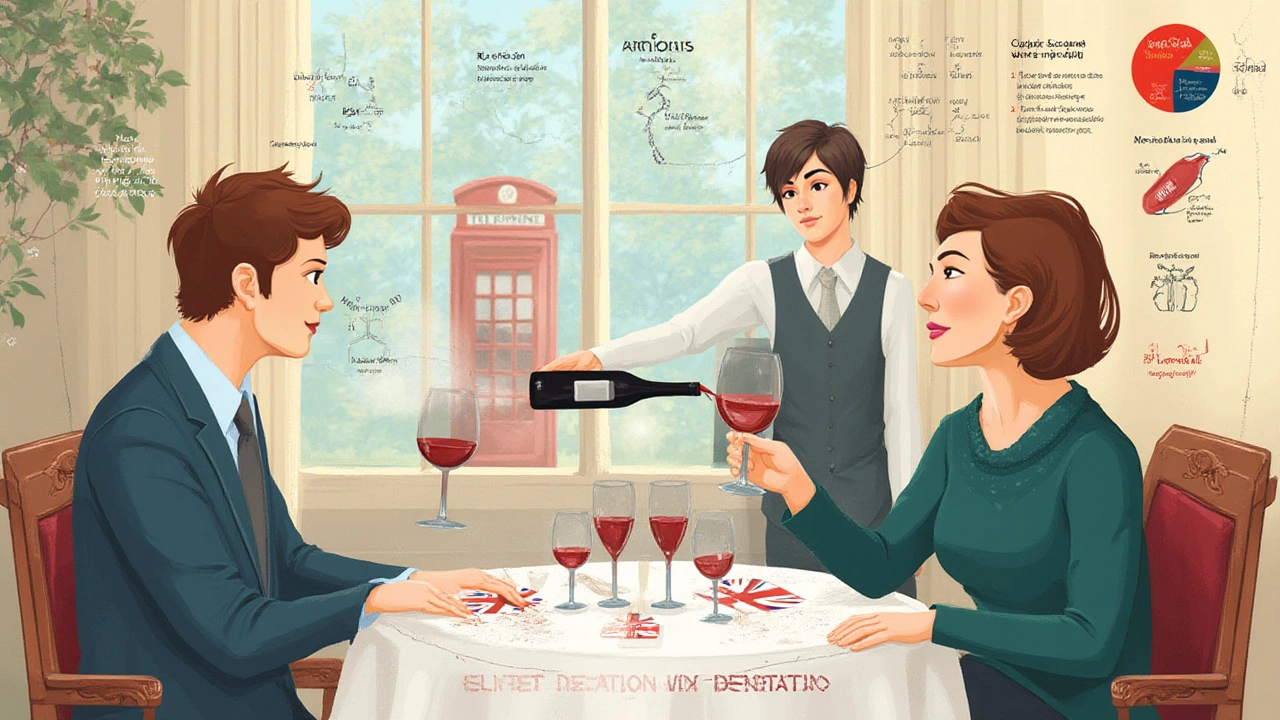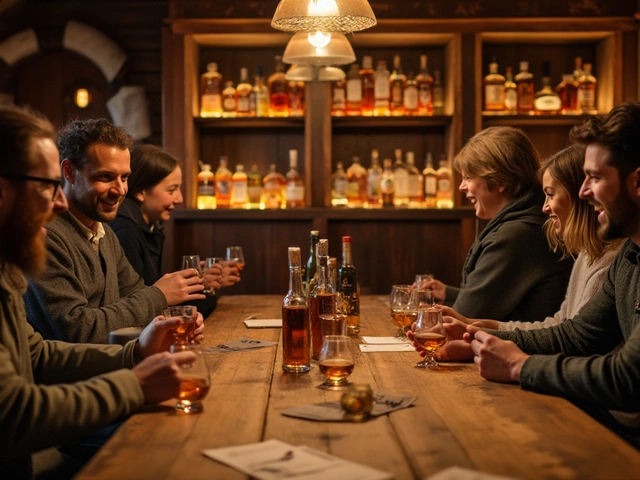Picture this: you’re out at a cozy little bistro, candlelight flickering, conversation humming along nicely, and then the waiter arrives with your bottle of wine. He doesn’t fill your glass right away. Instead, with a kind of practiced flair, he pours just a splash. It seems almost ceremonial—like there’s an unspoken code at play. But behind this tiny pour, there’s much more going on than just tradition. If you’ve ever felt puzzled or even a little awkward when handed that first taste, you’re not alone. There’s history, chemistry, and even a bit of theater woven into this move.
The Origins and Meaning of the Wine Pour Ritual
This little ritual of pouring just a taste goes back centuries, with roots in both hospitality and practicality. In old Europe, especially in places like France or Italy, wine merchants and innkeepers would pour a bit for the guest, not just as courtesy, but as a way to prove that the wine was genuine and safe. Back then, bottles didn’t come sealed up tight, and there was always the slim chance that somebody had tampered with your bottle or that the wine had turned bad during its journey. Offering the first taste wasn’t just polite—it was smart business. If the wine was off, it probably wasn’t the guest’s fault, but letting them confirm it right away avoided arguments later.
Today, let’s be honest, nobody’s really worried about their Cabernet being poisoned. But the custom remains, showing that nothing—good service, good wine—should be taken for granted. Now it’s like a handshake before the main event. The person who ordered the bottle (traditionally called the host) gets to try a little and decide if the wine is what they hoped for, or if there’s a problem. It’s less about whether you “like” it and more about catching faults, which can still crop up even with today’s slick bottling tech.
There’s also a cultural thing at play here. This pause before pouring gives everyone a moment to appreciate what’s being brought to the table. It signals respect for the product, and for you as a guest. In fine dining, these traditions matter. They help set the pace for the meal, and let’s be honest, they make the experience more memorable. Even if you’re not a wine geek, a bit of ritual never hurts when you’re splurging on a nice night out.
Some folks think the tiny pour is all about checking the label or confirming the vintage, but truth is, that’s the sommelier’s job before the bottle ever hits your table. Your little taste is mainly about quality control. If you get a corked wine or a bottle that’s somehow gone haywire, this moment is your safeguard.
If you’ve ever watched seasoned waiters at a high-end spot, you might notice the way they present the label first, holding it steady for you to see. That’s not just for show, either. You’re actually being asked to confirm: Is this the bottle you ordered? Is it the vintage you asked for? Mismatches can happen, especially in busy restaurants with deep wine cellars. The whole routine—presentation, uncorking, the small pour—is about making sure everything’s exactly as you wanted before anyone commits to drinking the bottle or paying for it.
It makes sense why the ritual stuck. When a bottle carries both a pretty price tag and the promise of a whole evening’s memories, you want to be sure each detail is right. Next time you’re out, watch closely—the best servers almost turn the act into a mini-performance, building anticipation for that first real sip.

How to Taste and What to Look For in That First Sip
Alright, so you’re handed that little pour. Now what? Most people wonder: am I supposed to swirl, sniff, sip, or just nod and say "thanks"? Here’s where you get to play detective, but don't panic—it’s not nearly as intimidating as it sounds. The trick: you’re not being asked to judge whether you love the wine. You’re being asked to check if the wine is flawed. Big difference.
Start with your nose before your lips. Swirl the wine gently in your glass—this helps release aromas. Give it a sniff. You’re not hunting for fancy notes of plum or forest floor unless you want to. Focus on one thing: does it smell clean? If the wine smells like damp cardboard or a wet basement, it might be corked, the most common wine fault. That musty, moldy odor comes from a chemical compound (TCA, or 2,4,6-trichloroanisole—yes, it’s as nasty as it sounds) that can form when natural corks get contaminated. This can dull flavors and kill the fruitiness of wines. Sometimes it’s subtle, but if you get any hint of mold or even nothing at all—like the wine seems oddly muted—that could be the problem.
Other faults can pop up too. Oxidized wine, which usually comes from a bad seal letting in air, will smell kind of like bruised apples or sherry. Think of apple slices left out on a counter too long. Cooked wine, often the result of storing bottles in too much heat, can smell jammy or “stewed”—not how most wines are supposed to taste. Funky barnyard or nail polish remover smells can happen, too. (Winemakers call these “volatile acidity” or “Brettanomyces,” but you don’t need to remember the terms—just use your instincts.)
If the wine smells clean, take a sip. You don’t have to gulp or swish it forever, just enough to see if the flavor lines up with the aroma. If something seems off, don’t be shy about telling the server. You aren’t insulting the wine or the waiter; you’re just signaling that something’s gone wrong in that one bottle. Even the best wineries have the occasional dud pop up, and most restaurants know to handle these situations discreetly and with a smile.
Here’s a tip: even the most experienced tasters sometimes waffle when figuring out what’s wrong with a wine. That’s normal! If you’re unsure, trust your nose. If it smells bad to you, it probably is. And if you’re in doubt, ask for a second opinion. A skilled sommelier or server will be happy to check for themselves without making you feel awkward.
Worried about looking silly with your little ritual? Don’t be. Servers have seen every reaction under the sun, from confident connoisseurs waxing poetic, to first-timers nervously nodding along. The fact you’re even paying attention is good enough. But hey, if you want to show off a touch of wine smarts, hold the glass by the stem (so your hands don’t warm up the wine), give it a swirl, sniff, and taste. Say, “That’s fine,” if it passes your test. Easy as that.
What if you just don’t like the wine, but there’s nothing technically wrong with it? Unfortunately, most places won’t take back a bottle just because it’s not your thing—unless you’re at a super fancy spot with major customer service priorities. So, if you’re venturing into unfamiliar grape territory, maybe ask your server for a sample or a recommendation before ordering a full bottle. Some places with wine by the glass are happy to let you try before committing.

Tips, Etiquette, and the Ways Restaurants Get It Right (Or Wrong)
Alright, you know why the ritual exists and what to do when the spotlight's on you. But there’s more to the story—the etiquette, the unspoken rules, and those moments when the process goes sideways.
One big tip? Don’t try to impress anyone with fake insight. There’s no prize for using the most adjectives or swirling so hard you soak your neighbor. If it’s clean, you give the nod. Simple courtesy wins out every time over showing off.
The host—the person who ordered the bottle—should do the tasting, even if they have zero wine knowledge. If it's someone's birthday or they're hosting the meal, let them have the honor (or responsibility, depending on their nerves). And don’t feel pressured to finish your splash if you don’t want to; a small sip is all it takes. No need to knock it back like a shot.
Restaurants with strong wine programs will often walk you through this process. Some spots—especially in the U.S. or UK—may explain why they’re pouring a taste, especially for guests who don’t seem familiar with the custom. If you get a server who just dumps a splash with no eye contact and no explanation, it’s okay to ask, “What should I be looking for?” They should make you feel comfortable, not on the spot.
After the taste—once you give the okay—the server will pour for your guests first, then top up your glass last. This isn’t by accident. In hospitality tradition, the host always drinks last, making sure everyone else is cared for first. It’s a small detail, but it carries meaning, especially at big family tables or business dinners where etiquette counts.
Every now and then, you’ll catch a restaurant cutting corners. Maybe they don’t offer the taste at all, or pour a test for the wrong person. If this happens, feel free to pipe up, but try to be polite. Some casual places skip the ritual entirely to save time. At higher-end spots, you should expect (and can request) the full service—presentation of the label, clean glasses, proper opening, and a taste before pouring for everyone.
Got a dinner party at home planned? You can steal a page from the professionals. Present the bottle, uncork with some flair, pour a little for your guest of honor (or just for yourself if you’re the only wine nerd present), and go through the sniff-sip routine. It adds a little class and makes the moment special—even with a simple weeknight dinner and a $12 bottle.
Modern restaurants sometimes deal with complaints about the ritual, too. Some diners say it’s outdated or nerve-wracking, while others think it’s essential for special occasions. The truth: it’s here to stay—at least in places where wine service is taken seriously. But as wine culture keeps evolving, there’s a trend toward friendliness and openness rather than stuffy tradition. Don’t worry about “doing it wrong.” If you care enough to check the wine, you’re doing it right.
One little-known fact: certain high-end places use the wine taste opportunity to sneak in a bit of showmanship. Some sommeliers will decant the wine—a process where the whole bottle gets poured into a fancy glass vessel—to let the wine breathe, especially for older reds. In this case, they’ll still offer you a taste to confirm quality before the decanting. Decanting can dramatically change the flavor, so don’t be surprised if the wine seems to “open up” with a few minutes in the glass.
And here’s a money-saving tip: if you open a bottle at home and it smells or tastes off, many wine shops will exchange it for free—corked or flawed bottles are a known risk in the industry. Keep your receipt, though!
To sum it up, the small pour you get at restaurants is about tradition, trust, and making sure no one gets stuck with a bad bottle. It’s a nod to centuries-old customs and a signal that the meal to come is worth savoring. Next time you see that splash poured, you’ll know the real story—and maybe savor it just a little more.


